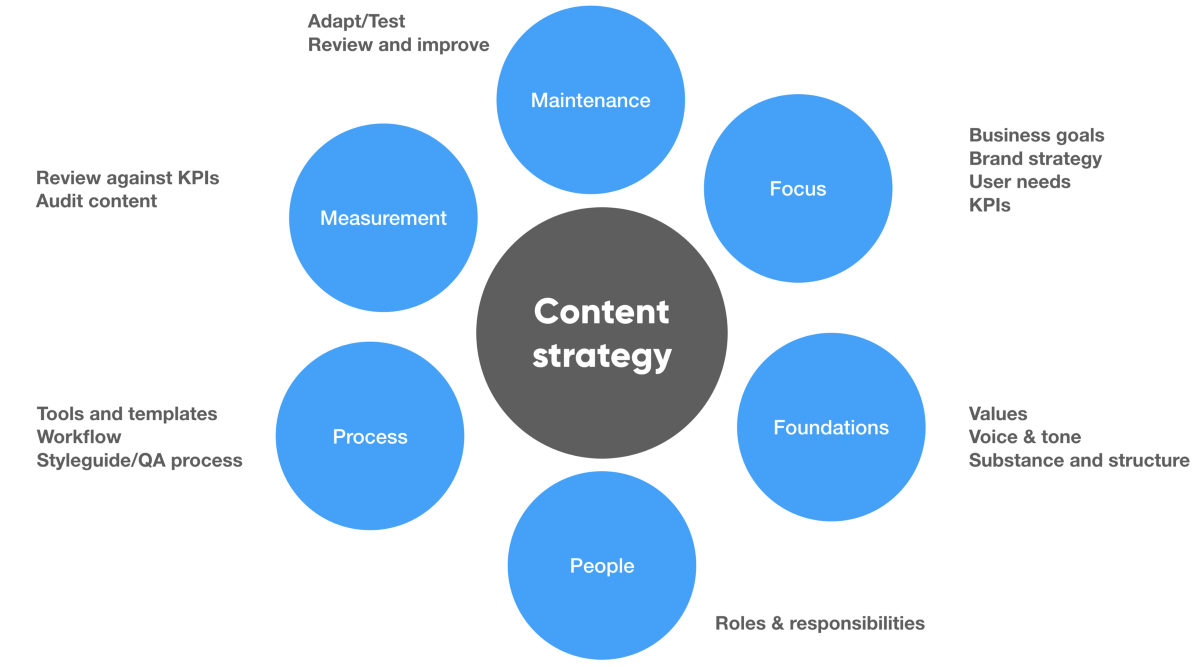Table of contents:
- Introduction
- Identify your target audience
- Determine your goals and objectives
- Develop a content strategy
- Create high-quality content
- Promote your content
- Measure success
- Conclusion

Introduction
Content marketing is a crucial aspect of the car industry. By creating engaging and informative content, car dealerships can effectively capture the attention of potential buyers and differentiate themselves from their competitors. In today’s competitive market, it’s essential for car dealerships to stand out and provide valuable information to their audience.
In addition to its importance in attracting and retaining the attention of potential customers, content marketing is also vital for maximizing return on investment (ROI). In today’s digital landscape, it’s important for businesses to be strategic and efficient in their marketing efforts.
By creating high-quality content that is tailored to the interests and needs of your target audience, you can effectively drive traffic to your website and increase your visibility. This can help to generate more leads and ultimately result in higher sales and a higher ROI.
Identify Your Target Audience
The first step in creating effective car industry content is to identify your target audience. This involves defining the specific group of people that you are trying to reach with your content. This could be based on factors such as age, gender, location, income level, or car ownership status.

Once you have defined your target audience, the next step is to research their interests, needs, and pain points. This can be achieved through a variety of methods, such as surveying your existing customers, analyzing your website analytics, and conducting market research. By understanding the interests and needs of your target audience, you can create content that resonates with them and addresses their pain points.
For example, if your target audience is young professionals living in urban areas, you might focus on content that highlights the convenience and fuel efficiency of your vehicles. Alternatively, if your target audience is families with young children, you might focus on content that emphasizes the safety features and spaciousness of your vehicles. By tailoring your content to the interests and needs of your target audience, you can effectively capture their attention and motivate them to take action.
Determine Your Goals and Objectives
Once you have identified your target audience, the next step is to determine your goals and objectives. This involves setting specific, measurable, achievable, relevant, and time-bound (SMART) goals for your content marketing efforts. For example, your goal might be to increase website traffic by 20% in the next three months, or to generate 100 new leads through your content in the next six months.

In addition to setting SMART goals, it’s also important to identify key metrics for tracking success. This could include metrics such as website traffic, click-through rates, conversion rates, and customer engagement. By tracking these metrics, you can monitor the effectiveness of your content marketing efforts and identify areas for improvement.
For example, if you notice that your website traffic is increasing but your conversion rates are not, this might indicate that you need to focus on creating more persuasive calls to action or improving the user experience on your website. By regularly monitoring and analyzing your results, you can ensure that your content marketing efforts are aligned with your goals and objectives and are effectively driving ROI.
Develop a Content Strategy
Once you have set your goals and identified key metrics for tracking success, the next step is to develop a content strategy. This involves creating a content calendar that outlines the types of content you will create, when it will be published, and where it will be distributed.
In developing your content calendar, it’s important to consider the types of content that will be most effective for your audience. This could include blog posts, videos, infographics, or social media posts. By understanding the interests and needs of your target audience, you can create content that resonates with them and motivates them to take action.

In addition to identifying the types of content you will create, it’s also important to determine the best channels for distributing your content. This could include your website, email marketing, social media, or other online platforms. By distributing your content through the right channels, you can effectively reach your target audience and drive traffic to your website.
In summary, developing a content strategy involves creating a content calendar, identifying the types of content that will be most effective for your audience, and determining the best channels for distributing your content. By following this step-by-step guide, you can effectively plan and execute your content marketing efforts to maximize ROI.
Create High-Quality Content
Once you have developed a content strategy, the next step is to create high-quality content that resonates with your target audience and drives them to take action. This involves several key elements, such as using engaging and informative headlines, including relevant images and videos, and using persuasive language and calls to action.
When creating content, it’s important to use engaging and informative headlines that capture the attention of your audience and clearly communicate the value of your content. This could be a question, a statement, or a benefit-driven phrase that piques the interest of your audience and encourages them to read on.

In addition to using engaging headlines, it’s also important to include relevant images and videos in your content. This can help to break up the text and make your content more visually appealing. Images and videos can also help to illustrate key points and make your content more engaging and memorable.
Another key element of creating high-quality content is using persuasive language and calls to action. By using persuasive language, you can motivate your audience to take the desired action, such as visiting your website or contacting your dealership. Calls to action can be included throughout your content, such as at the end of a blog post or in a banner on your website.
Finally, it’s important to optimize your content for search engines (SEO). This involves using keywords and phrases that your target audience is likely to search for, as well as optimizing your content for mobile devices and ensuring that it loads quickly. By following best practices for SEO, you can improve the visibility of your content in search engine results and drive more traffic to your website.
Promote Your Content
Once you have created high-quality content, the next step is to promote it and distribute it to your target audience. This involves using a variety of channels, such as email marketing, social media, and other online platforms. By distributing your content through multiple channels, you can reach a wider audience and drive more traffic to your website.

In addition to distributing your content, it’s also important to engage with your audience through comments, likes, and shares. By responding to comments and interacting with your audience, you can build trust and credibility and create a sense of community around your brand. This can help to increase customer loyalty and drive more sales.
Also, it’s important to regularly monitor and analyze your results to identify areas for improvement. This could involve tracking metrics such as website traffic, conversion rates, and customer engagement. By regularly reviewing your results, you can identify any areas where your content marketing efforts are not meeting your goals and make adjustments as needed.
Measure Success
There are several key performance metrics that can help you measure the success of your content on your car dealership’s website. These include:
-
- Traffic: Track the number of visitors to your site and the pages they visit. This can help you understand which content is most popular and which pages are driving the most traffic.
-
- Engagement: Monitor how long visitors stay on your site and how many pages they view. This can help you gauge the quality and relevance of your content.
-
- Conversion rate: Track the percentage of visitors who take a desired action, such as filling out a form or making a purchase. This can help you understand which content is most effective at driving conversions.
-
- Referral traffic: Analyze the sources of traffic to your site, including social media and search engines. This can help you understand which channels are driving the most traffic and engagement.

To measure these metrics, you can use tools such as Google Analytics, which is a free web analytics service offered by Google. Other tools to consider include:
-
- HubSpot: This marketing software includes a range of tools for tracking website traffic, conversion rates, and other key performance metrics.
-
- Crazy Egg: This tool provides heat maps and scroll maps to help you understand how visitors interact with your site.
-
- Mixpanel: This analytics platform allows you to track user actions and behaviors on your site, including how they interact with your content.
It’s important to regularly review and analyze these metrics to understand what’s working and what’s not, and to make adjustments to your content strategy accordingly.
Conclusion
In conclusion, creating effective automotive content is essential for boosting sales and driving customer interest in the automotive industry. By following a step-by-step guide, such as the one outlined in this article, car dealerships can effectively plan and execute their content marketing efforts to maximize return on investment (ROI).
To sum it up, creating effective content for the auto industry involves using engaging and informative headlines, including relevant images and videos, using persuasive language and calls to action and optimizing for search engines (SEO). By following these best practices, you can create content that effectively captures the attention of your target audience and motivates them to take action.
At 101content, we understand the importance of creating effective automotive content. Our team of experienced automotive writers and editors can help you to plan and execute a successful content marketing strategy that drives results. Contact us today to learn more about our services and how we can help your business succeed in the automotive industry.
